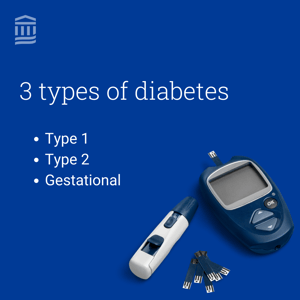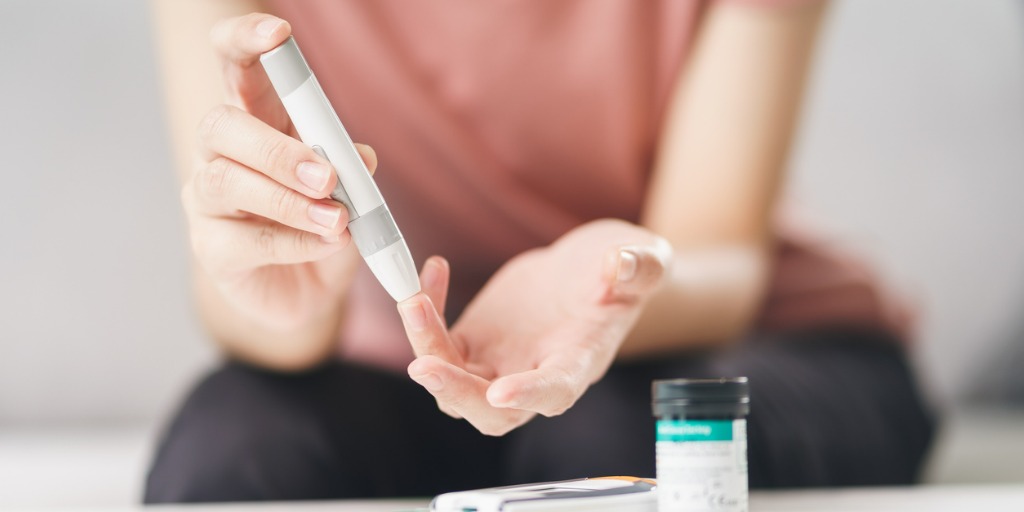An introduction to diabetes
Since November is American Diabetes Month, it's a good time to deepen our understanding of what the condition entails, who's affected, and strategies that can help with treatment and prevention. Continue reading to learn some of the key facts about diabetes.
There are three types of diabetes
 Diabetes is classified under type 1, type 2, and gestational diabetes. Each is related to how your body responds to a type of sugar called glucose.
Diabetes is classified under type 1, type 2, and gestational diabetes. Each is related to how your body responds to a type of sugar called glucose.
When you eat, part of that food breaks down into glucose, also known as blood sugar, and that goes into your bloodstream and then to your cells for energy. But it's not a direct process. When glucose levels rise, the pancreas releases a hormone called insulin that acts as a key, unlocking the glucose so it can be utilized properly. If you have diabetes, this mechanism doesn't work the way it should.
With Type 1 diabetes — which typically appears in adolescence — the body doesn't make enough insulin, so too much glucose stays in the bloodstream. This affects about 10 percent of people with diabetes, or around 200,000 people per year, according to Mayo Clinic.
With Type 2 diabetes, you make enough insulin but it doesn't unlock glucose the right way. This is known as insulin resistance, and it causes glucose levels to gradually rise, and for more insulin to be released, which can cause significant health issues.
Gestational diabetes is a type that develops during pregnancy in women who don't already have diabetes. The Centers for Disease Control (CDC) estimates that between 2% to 10% of pregnancies in the U.S. are affected by this type. Blood sugar levels usually return to normal after the baby is born, but the issue does increase your risk of developing type 2 diabetes later in life.
Diabetes is rising worldwide
According to the World Health Organization, the number of people with diabetes rose from 108 million in 1980 to 422 million in 2014. The International Diabetes Federation projects that by 2030, about 643 million people worldwide will have diabetes and that number will be nearly 800 million by 2045.
Because excess weight and obesity have been associated with Type 2 diabetes, many experts suggest that because obesity is rising around the world, this is likely one of the biggest causes of more diabetes diagnoses.
.png?width=300&height=300&name=LIZ-Posts%20wrapped%20in%20blog%20II%20(6).png)
Diabetes increases other health risks
Particularly if diabetes isn't being treated well and blood sugar is consistently high or fluctuates too much, you can be at much higher risk for complications. These include:
- Heart disease
- Hearing problems
- Slow wound healing
- Nerve damage
- Kidney disease
- Eye problems
- Sleep issues
- Dementia
That's why getting diagnosed and on treatment that controls blood sugar is crucial, because it can also lower other health risks and diabetes effects.
Diabetes isn't curable, but prediabetes is reversible
.png?width=300&height=300&name=November%202023%20content%20(7).png) Prediabetes is when your blood sugar is higher than normal, but not high enough to be diagnosed with type 2 diabetes. With this condition, your risk of developing type 2 is much higher, and you're also more likely to develop heart disease or have a stroke.
Prediabetes is when your blood sugar is higher than normal, but not high enough to be diagnosed with type 2 diabetes. With this condition, your risk of developing type 2 is much higher, and you're also more likely to develop heart disease or have a stroke.
Prediabetes is very common, the CDC notes, and it's estimated that 96 million U.S. adults have the condition, but more than 80% don't know it.
The good news is that with some meaningful lifestyle changes, it's often reversible. Also, if you already have diabetes, these same habits can make it easier to manage the condition.
According to the American Diabetes Association, the most important steps are getting regular physical activity and adopting a diet that's rich in fruits and vegetables.
Other shifts that can help are losing weight if needed, not smoking or quitting if you do, managing stress, and focusing on quality sleep.
Whether you've been diagnosed with prediabetes or diabetes runs in your family, and you're trying to lower your risk, implementing strategies like these can go a long way toward protecting your health.
If you’re a member of Mass General Brigham Health Plan, you may be eligible to enroll in Path to Lifestyle Change, a two-year diabetes prevention program delivered remotely to patients with prediabetes—and at high risk of developing type 2 diabetes.
To learn more about how to enroll, click here.
